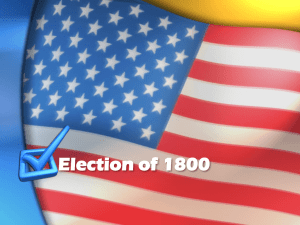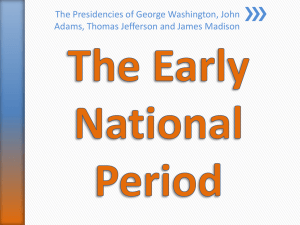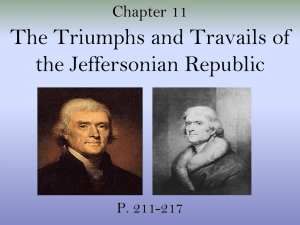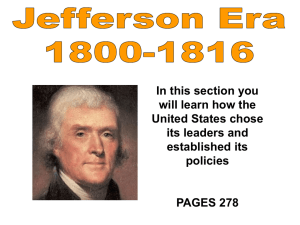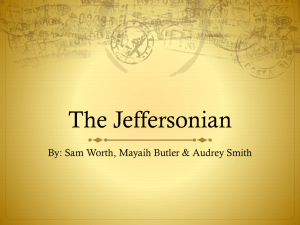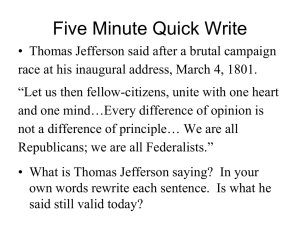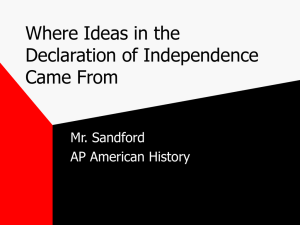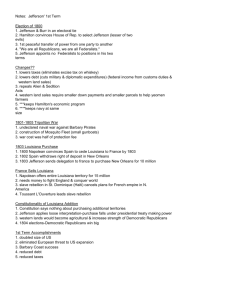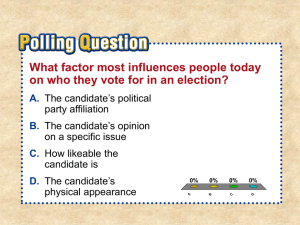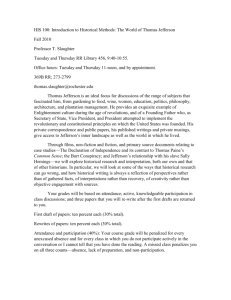The Republicans Take Power
advertisement
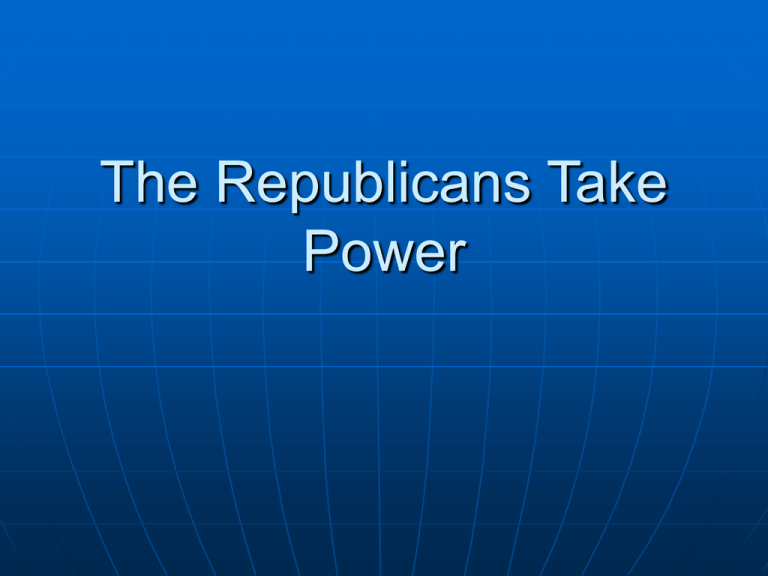
The Republicans Take Power Match the description to the term 1. laissez-faire 2. John Marshall 3. Judiciary Act of 1801 4. Aaron Burr 5. Albert Gallatin vice president under Thomas Jefferson increased the number of federal judges secretary of the treasury under Thomas Jefferson French expression for “let the people do as they choose” broadened federal power at the expense of the states 6. What does the 12th Amendment do? 7. What was Jefferson’s and Gallatin’s plan to reduce the National Debt? 8. Why would Adams want to fill the new Judge positions with Federalists? 9. Why did Marbury v. Madison go to the Supreme Court? 10. What are the three principals of Judicial Review? Jefferson Becomes President The nation’s new capital, Washington, D.C., was located on the Potomac River. The city contained only two prominent buildings: the White House and the unfinished Capitol. The Election of 1800 In the election of 1800, Thomas Jefferson was the Republican nominee for president, and Aaron Burr was the Republican vice presidential candidate. John Adams was the Federalist candidate for president, and Charles Pinckney of South Carolina was the vice-presidential candidate. Neither candidate travelled around the country making speeches and campaigning. Instead they wrote letters to leading citizens and newspapers to publicize their views. Because the Electoral College voted for President and Vice President separately not as a team, Jefferson and Burr tied for the most votes, so the House of Representatives had to decide the election. One Federalist in the HOR, with the urging of Alexander Hamilton, decided not to vote for Burr, so Jefferson became president and Burr became vice president. There had been a long standing political and personal bitterness between Burr and Hamilton, which will ultimately lead to a duel between the men and one of them will be murdered! Congress ratified the Twelfth Amendment in 1804, which requires electors to vote for president and vice president on separate ballots. This amendment would prevent another tie between a presidential and a vice-presidential candidate. Jefferson tried to reach out to Federalists in his Inaugural Address. He also emphasized reducing the power of the federal government. This idea is similar to the French philosophy laissez-faire, which means “let (people) do (as they choose).” Exit Question 1 How do election campaigns of today differ from those of 1800? Jefferson’s Policies Jefferson’s administration was small compared to those of today. This followed his idea of limited national government. Jefferson appointed James Madison as secretary of state and Albert Gallatin as secretary of treasury. Jefferson and Gallatin wanted to reduce the national debt and they cut military expenses to do so. The Judiciary Act of 1801 increased the number of federal judges. Before leaving office, Adams filled many of the judicial positions with Federalists so that Federalists could control the courts. These judges were known as “midnight judges.” After Jefferson was elected, he told Secretary of State Madison not to deliver the outstanding commissions. To force the delivery of his commission, William Marbury took the case to the Supreme Court. Chief Justice John Marshall turned down Marbury’s claim. With his decision, Marshall set out three principals of judicial review: The Constitution is the supreme law of the land; when there is conflict between the Constitution and any other law, the Constitution must be followed; and the judicial branch has an obligation to uphold the Constitution. In cases like McCulloch v. Maryland and Gibbons v. Ogden the Supreme Court broadened the power of the federal government at the expense of the states. Exit Question 2 Who were the “midnight judges” and what did Adams hope to accomplish by appointing them?
